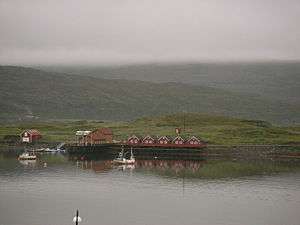Overcast
Overcast or overcast weather, as defined by the World Meteorological Organization, is the meteorological condition of clouds obscuring at least 95% of the sky.[1] However, the total cloud cover must not be entirely due to obscuring phenomena near the surface, such as fog.[2]

Overcast, written as "OVC" in the METAR observation, is reported when the cloud cover is observed to equal eight oktas (eighths).[1][3] An overcast sky may be explicitly identified as thin (mostly transparent), but otherwise is considered opaque, which always constitutes a ceiling in aviation meteorology.[2]
Sometimes clouds can be different colors such as black or white, but overcast usually refers to darker skies.[4] In some cases, it can be impossible to see distinct borders of clouds or the sky may be covered by a single type of cloud, such as stratus and the whole sky will be a dull white.
Periods of overcast weather can range from a few hours to several days. Overcast weather can also affect people suffering from seasonal affective disorder.
The same weather, when observed from above, might be referred to as (an) undercast.[5]
See also
| Wikimedia Commons has media related to Overcast. |
| Look up overcast in Wiktionary, the free dictionary. |
References
- "Aerodrome Weather Report" (PDF). World Meteorological Organization. Archived from the original on 24 February 2012. Retrieved 30 August 2016.CS1 maint: BOT: original-url status unknown (link)
- "Overcast". American Meteorological Society. Retrieved 30 August 2016.
- World Meteorological Organization. "Overcast". Eumetcal. Archived from the original on 24 September 2016. Retrieved 30 August 2016.
- Oxford English Dictionary, 3rd ed. (website), s.v. “overcast," 2a and 2b. http://www.oed.com/view/Entry/134377#eid32922408 (Accessed September 7, 2016).
- "Undercast". American Meteorological Society. Retrieved 30 August 2016.